I’m writing up a longer guide to the BMW G/S and GS motorcycles, but as part of that, I realised to avoid that one becoming too long, I have to write a sub-article on how BMW Paralever works (it’s capitalised, as it’s a BMW trademark).
Like many before me, I’ve found Paralever confusing. It has been around for decades now, and I find many other explanations hard to follow, so after piecing it all together, I’m writing one up myself.
While reading about BMW Paralever, I also read about Moto Guzzi’s “Compact Reactive Drive Shaft” (written as “CARC” on the rear drive unit of the bikes themselves — CARC is a short form for Cardano Reattivo Compatto). Moto Guzzi may have patented it, but it operates under the same design principle as BMW’s Paralever. The same goes for Kawasaki’s Tetra-Drive, used on the Concours 14.
Because BMW is a much bigger manufacturer, and because Moto Guzzi doesn’t currently have in production any motorcycles with the CARC system and the Concours 14 has been discontinued, I’ll focus on BMW Paralever — though much of the below about how it works applies equally to CARC and Tetra-Drive.
Below I’ll address:
- What is the problem Paralever (or CARC/Tetra-Drive) is trying to address?
- How does Paralever work?
- How has Paralever evolved over time?
- What other motorcycles have Paralever / CARC / related technology, and which ones don’t, and why?
Enjoy!
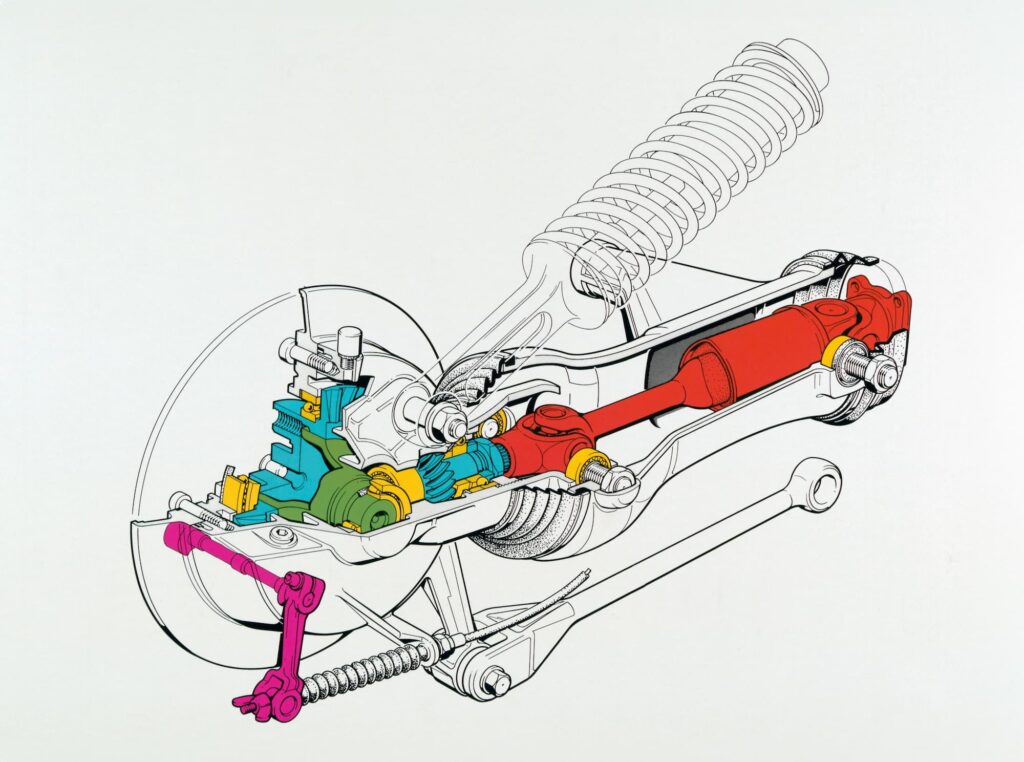
Are you obsessed with motorcycles?
Well, I am. That’s why I created this site — as an outlet. I love learning and sharing what others might find useful. If you like what you read here, and you’re a fraction as obsessed as I am, you might like to know when I’ve published more. (Check the latest for an idea of what you’ll see.)
BMW Paralever — In a Nutshell
Briefly, BMW Paralever is the name given to the rear drive architecture of most modern BMW shaft-driven motorcycles.
But BMW didn’t invent the technology behind “Paralever”. In fact, MV Agusta had used it in 1950 in a race bike, and Moto Guzzi had used it in a race bike in 1987. Moto Guzzi later commercialised its tech as CARC as mentioned above.
But BMW was the first manufacturer to bring Paralever-style rear drive to production motorcycles, and is the only one to still do so.
Paralever involves suspension, but it’s not “Paralever suspension”. In fact, BMW uses the name to describe the architecture of the rear axle and drive. The suspension is kind of incidental. Actually, the suspension is often just a monoshock (a single suspension strut with built-in spring and damper), like on many modern motorcycles.
One reason why Paralever describes more than the suspension is that the word stems from “parallel” or “parallelogram”. The relationship is that the shaft drive and a strut are in parallel, and together form a parallelogram, which is the geometric basis of the Paralever design.
By the way, speaking of nomenclature, BMW often calls the shaft drive a “cardan drive”. It’s the same thing as a shaft drive. The name “cardan drive” comes from Gerolamo Cardano, an Italian 16th century polymath and inventor who partially invented and described a number of modern mechanical items, including the cardan shaft with universal joints.
The name “CARC” on Moto Guzzi motorcycles is written on the side of the rear drive unit itself, where the axle is. The Cardano in CARC is both a reference to the inventor, as well as the Italian standard name of the same thing — they call it a “trasmissione a cardano” or “trasmissione cardanica”.

What is Paralever Designed to Solve?
The goal of the BMW Paralever setup is to counter a specific weird thing that happens in shaft-drive motorcycles.
If you ride chain-driven motorcycles, you’re probably used to “squat’. This is when a motorcycle’s rear squats down under acceleration.
Motorcycles (and cars and anything) squat under acceleration because there’s a force being applied at the ground level, but the mass of the vehicle is above it. So the weight is transferred from front to rear.
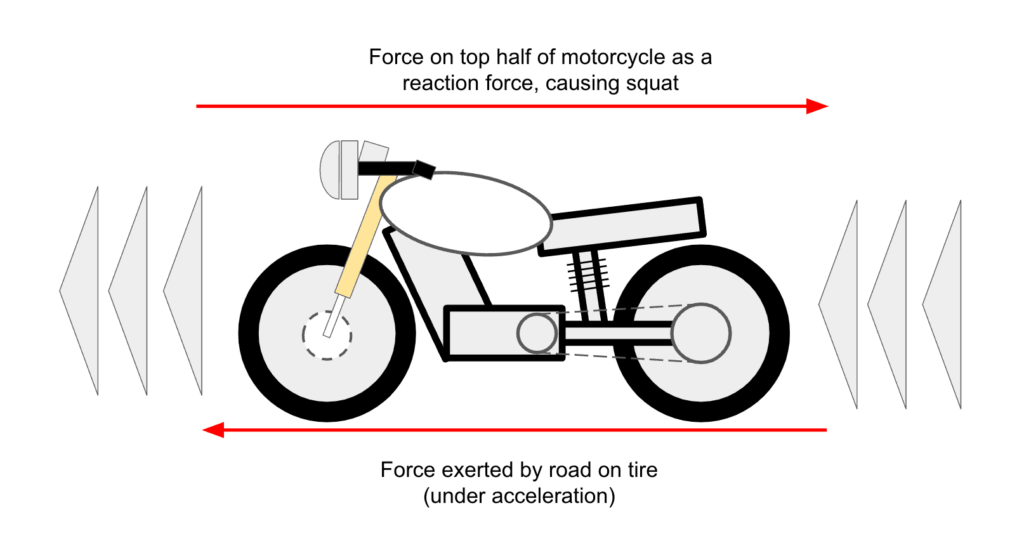
You can understand squat and why you have to counter it by imagining a sprinter. To sprint fast, a sprinter has to lean forwards, otherwise their legs would run out from under them.

Because old, simple motorcycles and cars (without fancy active suspension) can’t actively lean forwards, they squat to the rear under acceleration. This isn’t generally good, because it lightens up the front too much, and means you can’t steer the thing.
The good news is that chain- and belt-driven motorcycles are designed to counter squat. When you accelerate, the chain or belt pulls on the sprocket. Motorcycle chains and swing arms are designed to work in harmony so that the force under acceleration extends the suspension in such a way for the suspension to remain neutral. You might read that high-end track-focused sport bikes have adjustable swing arm pivots — this is to tweak this behaviour, which is very sensitive to small changes. There’s a good (if complex) explanation here.
But without a chain or belt, you don’t have the same tools to counter squat. Let’s look at what happens in shaft drive motorcycles.
What Happens in Shaft Drive Motorcycles Without Paralever under Acceleration?
Let’s look at what happens in a shaft-driven motorcycle without a Paralever setup. This highlights why you need it.
You may have heard of the term “shaft jacking”, but like me, wondered how the heck the physics work. Well, this is how shaft jacking works.
In shaft-driven motorcycles like BMW boxer motorcycles (and a few others from other brands), the physics of acceleration is different. There’s no chain. The drivetrain is a rigid item — the rear wheel is attached physically to the engine via the drive shaft (via gears and universal joints).
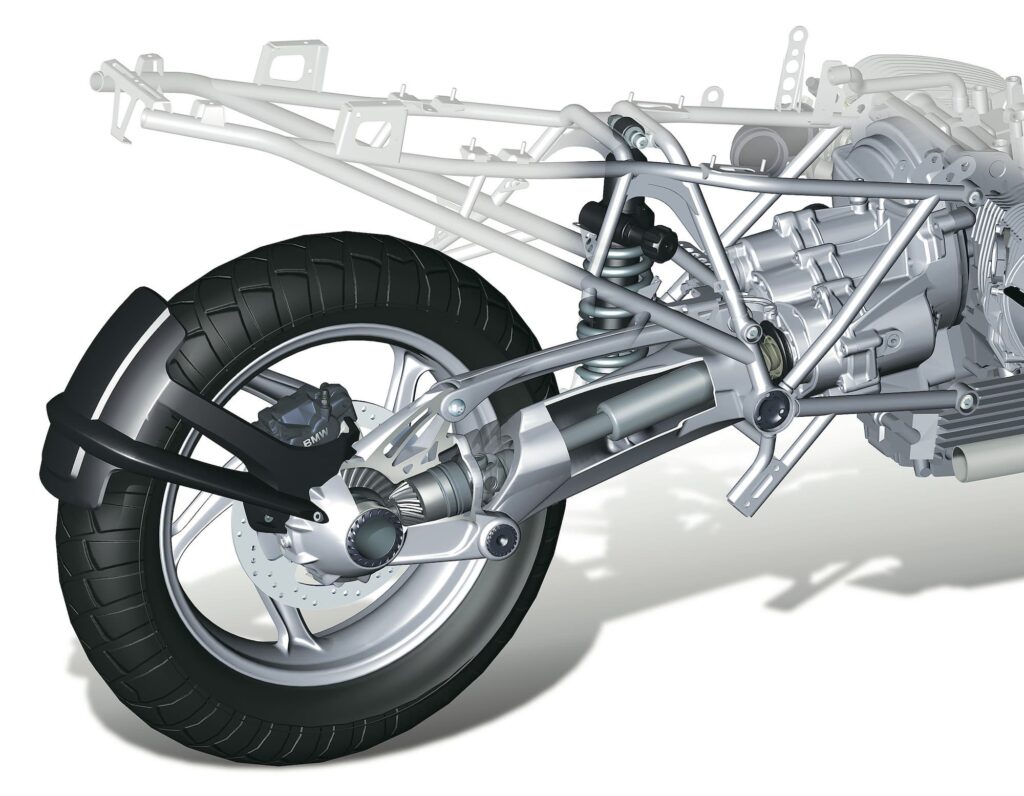
The shaft drive of a motorcycle reacts to torque in an interesting way. It, too, counters a motorcycle’s natural tendency to squat under acceleration, similar to the way a chain or belt does, but to a different degree.
When the shaft drive turns the gear attached to the rear wheel, the shaft’s pinion gear rotates the rear wheel clockwise via the ring gear. This encourages an opposite reaction from the pivot at the end of the swing arm, which wants to turn anti-clockwise to compensate. There’s a diagram below, but let’s look at why this happens first.
The reason for the opposite reaction is the basic physical law that when you push against something, it pushes back (Newton’s Third Law). Applied to rotating objects, when you apply a rotating force to one thing, it tries to rotate the other way, in any way possible. For example, when you spin a heavy thing above your head, you will want to spin around the other way to compensate.
When the swing-arm pivot turns anti-clockwise because of the pushing-back effect, the suspension extends and the motorcycle rises.
If the two forces are in relative harmony, then the rider won’t notice. It’d be as if the rear end stayed stable. This isn’t a bad thing, and it’s why on many motorcycles that you ride generally gently, and that don’t have much torque, the way the suspension reacts to grabbing the throttle is just part of the riding experience. (Even on other motorcycles, it can be considered “character”.)
But when you are looking for predictable suspension and stability in a wide variety of conditions, simple “Monolever” shaft-drive designs fall short. Under heavy load, the suspension rises up as a reaction to the forces of acceleration. This is known as “shaft jacking”. It’s sometimes called the “elevator effect” or even the “rubber cow” effect (for reasons I never figured out, because I find it more amusing to just imagine a rubber cow).
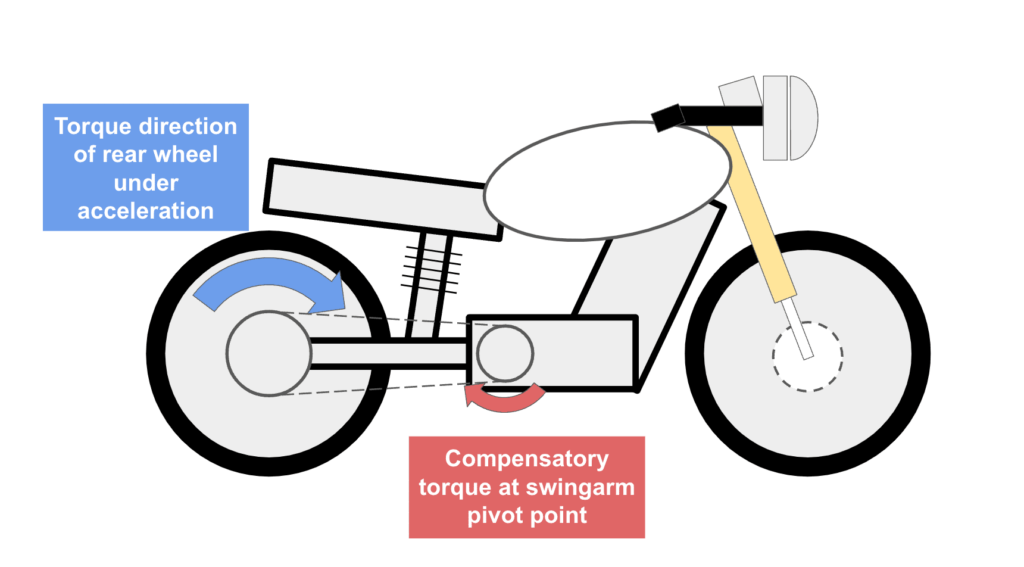
“Great,” you say. “Even more anti-squat!” Sure, sounds good, but it can be that there’s too much anti-squat in action. In BMW motorcycles, particularly as they got torquier, the rear would rise too much.
Look at the video below of a BMW R 1200 GS under load on a dyno. Here, you can see the motorcycle clearly standing up under heavy acceleration. (Note that this motorcycle does have a Paralever rear suspension design.)
An easy way to compensate for shaft jacking is to have a longer swing arm. The longer it gets, the less it would rotate to compensate for the torque on the rear wheel. This is because of the lever effect of a long swing-arm — just like having a long lever lets you crack open very tight bolts. Having stiff suspension also helps.
With a relatively low-torque motor and a long enough swing arm, you don’t have much of a problem. This is why the BMW R 1200 C, which was released at a time when other shaft-drive motorcycles all had Paralever, doesn’t have a Paralever rear-end design, for example.
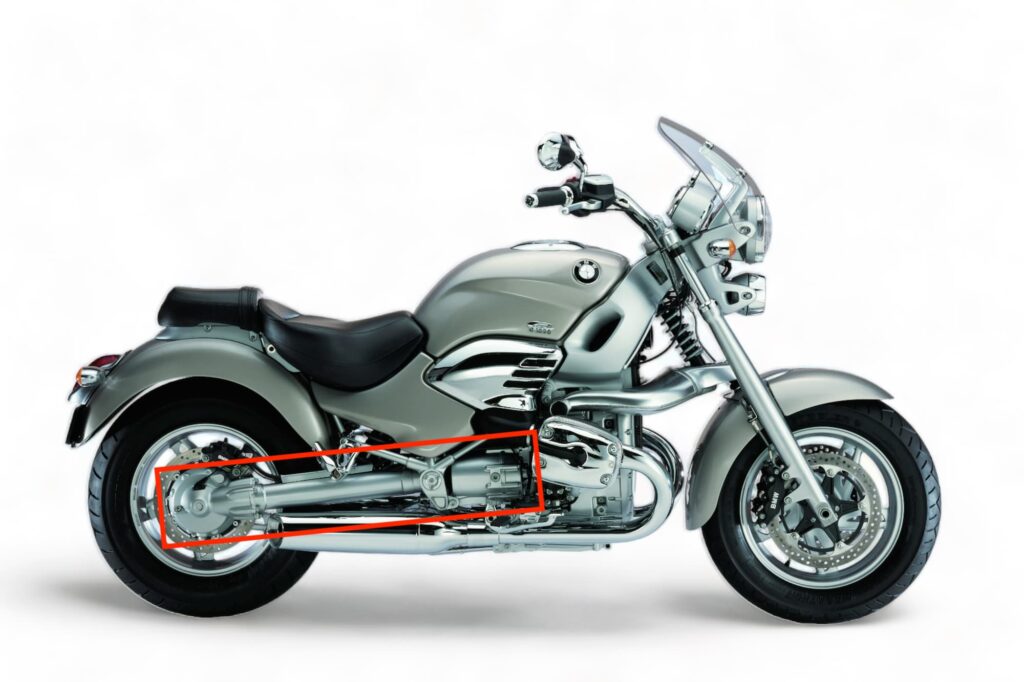
Lots of riders of old motorcycles, like the Suzuki GS (with an inline four-cylinder engine, no relation to the BMW GS), or many Moto Guzzi motorcycles, know about the shaft jacking effect but don’t care. It doesn’t bother them in the way they ride their motorcycles. Even the huge and torquey Suzuki Boulevard M109R doesn’t have any shaft jacking compensation. But it has a long swing arm, and people just deal with the effect.
But with torquier motors with short swing arms, especially at lower gears, and doubly especially on motorcycles with soft suspension, the shaft jacking effect can be quite intense. And when the throttle is closed, you get shaft jacking goes the opposite way, and the bike can squat down.
The problem is worse during cornering. When you close the throttle before entering a corner, the bike squats down at the rear. And when you open the throttle when exiting, the bike stands up. This change in geometry can lead to some unsettling pitching, as well as having traction in places where you don’t want it.
To counter torque jacking BMW could have extended the swing arm. But you can’t just arbitrarily extend the length of a swing-arm infinitely. So BMW needed a new solution.
How Paralever Reduces Shaft Jacking
Firstly, Paralever doesn’t totally eliminate the shaft jacking effect. No purely mechanical system can deliver a perfect drivetrain and suspension system under all conditions (which would be infinite traction on a magic carpet ride). Paralever is rather a neat trick to get you significantly closer.
The goal of the BMW Paralever system (and other similar suspension systems) is to create a virtual longer swing arm. The rear axle no longer pivots around the front of the swing arm, but rather around a point further away.
To achieve this parallelogram and the “virtual longer swingarm”, motorcycle manufacturers add in two things:
- A second universal joint in the drive shaft, to allow the shaft to bend, and
- A second suspension arm in parallel, with hinges
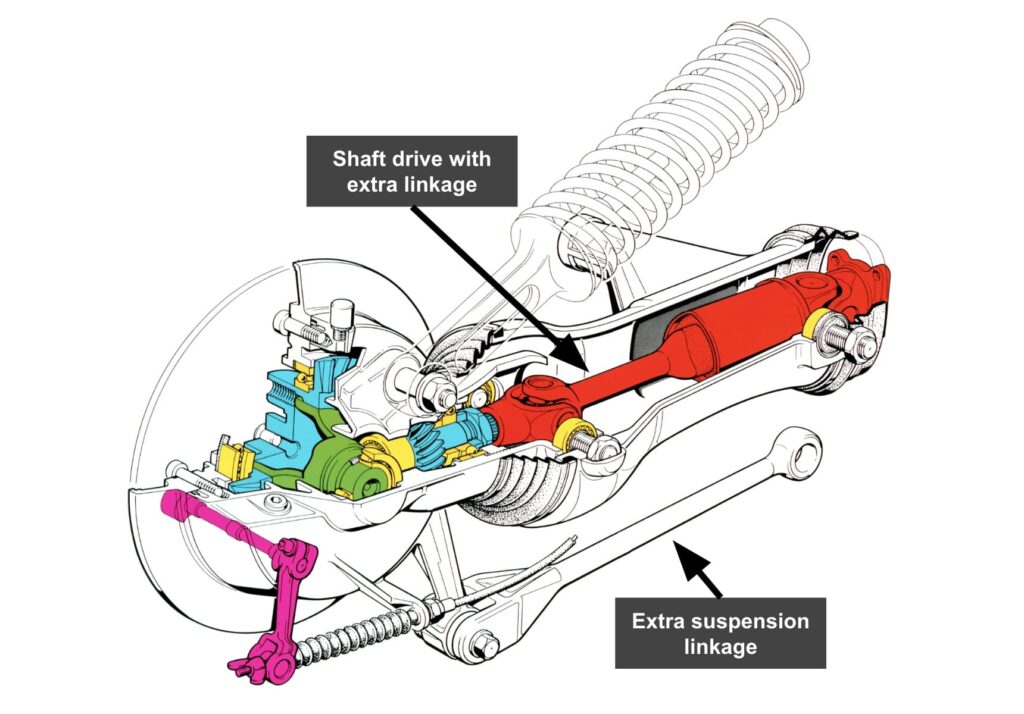
You can see the way this works in the following diagram (in which all the movements are exaggerated). In a simple suspension system with one pivot, the swing arm is exactly as long as the drive shaft. The wheel pivots around the pivot point of the drive shaft. But when you add in the parallelogram with hinges, the pivot point moves to a virtual point further away, thus pivoting less.
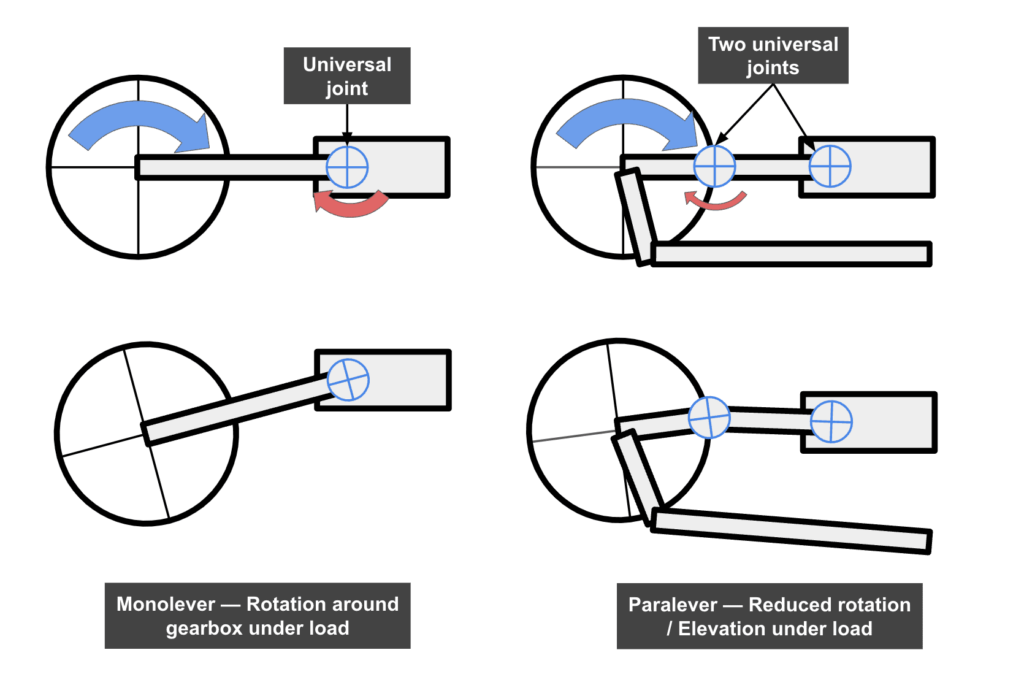
Another way of understanding the Paralever system is to think of it as partially isolating the rear drive unit. This is similar to how brake discs or callipers are given a degree of freedom of movement in floating disc / caliper systems (see my braking systems guide for more about this).
For another point of view, this person, Anton Largiader, is a highly knowledgeable and generous motorcycle blogger who wrote up the way Paralever works in his terms. I had to read it around seven times, and didn’t quite understand the way he phrased it, which is why I put together this page — notwithstanding that at least his explanation confirmed what I figured out elsewhere. But it may provide another way of phrasing it that you can appreciate.
How BMW Paralever Evolved Over Time
See the complete guide to the BMW GS Boxers, from the R80 G/S to today, here.
BMW first introduced the Paralever design in 1987 in the BMW R 80 GS (they dropped the “/”) and R 100 GS motorcycles.
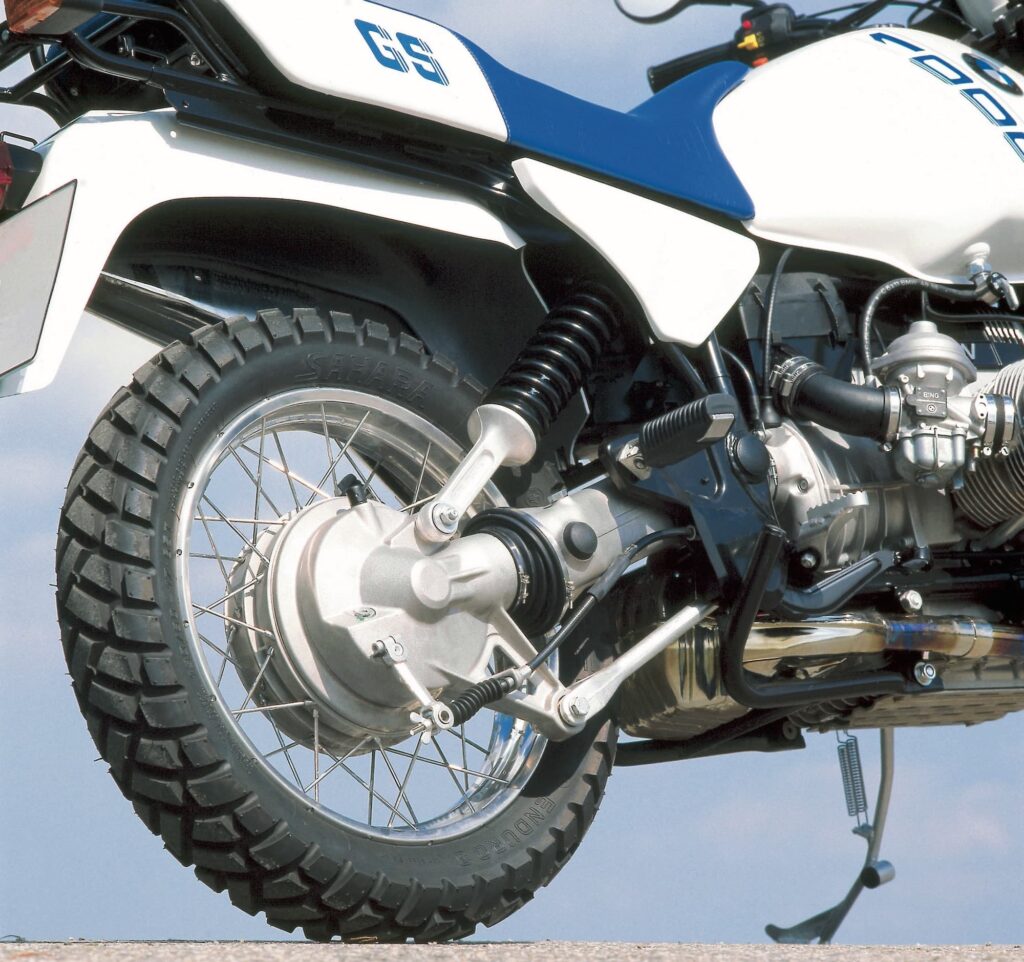
The first Paralever design had the second link underneath the motorcycle. This worked fine, but it reduces clearance (only slightly, from the looks of it, but still — it’s supposed to be an “enduro” after all). Nonetheless, this design endured (Get it? Endured? Enduro? …I’ll see myself out) for over a decade.
BMW didn’t bring Paralever to the other shafties initially — not even to the R 100 RT, nor the K bikes. BMW did not give the K 100 RS Paralever initially, though later models got it. The gorgeously oddball BMW K1, however, got it right away.

BMW kept general Paralever design the same in the R 1100 and R 1150 motorcycles, though in the R 1100 BMW also introduced Telelever front suspension — that’s another story.
See more about how Telelever, Duolever, and EVO Telelever work here.
Similarly, the other “Flying Brick” motorcycles didn’t get a significant update to their mechanical rear suspension design. The BMW K 1200 RS (see more about that bike here), with its huge horizontally-mounted four, still had the same fundamental design of Paralever rear drive.
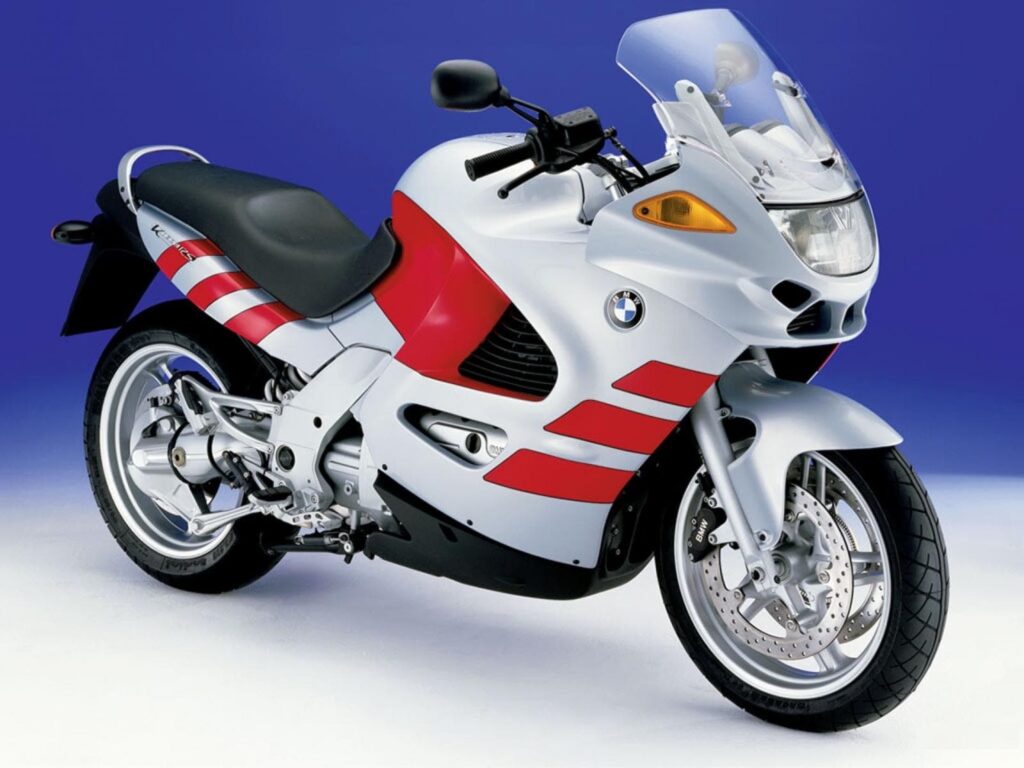
BMW improved the Paralever setup from the 2004 BMW R 1200 GS, calling it “Evo-Paralever”. The lever arm is relocated to above the driveshaft.
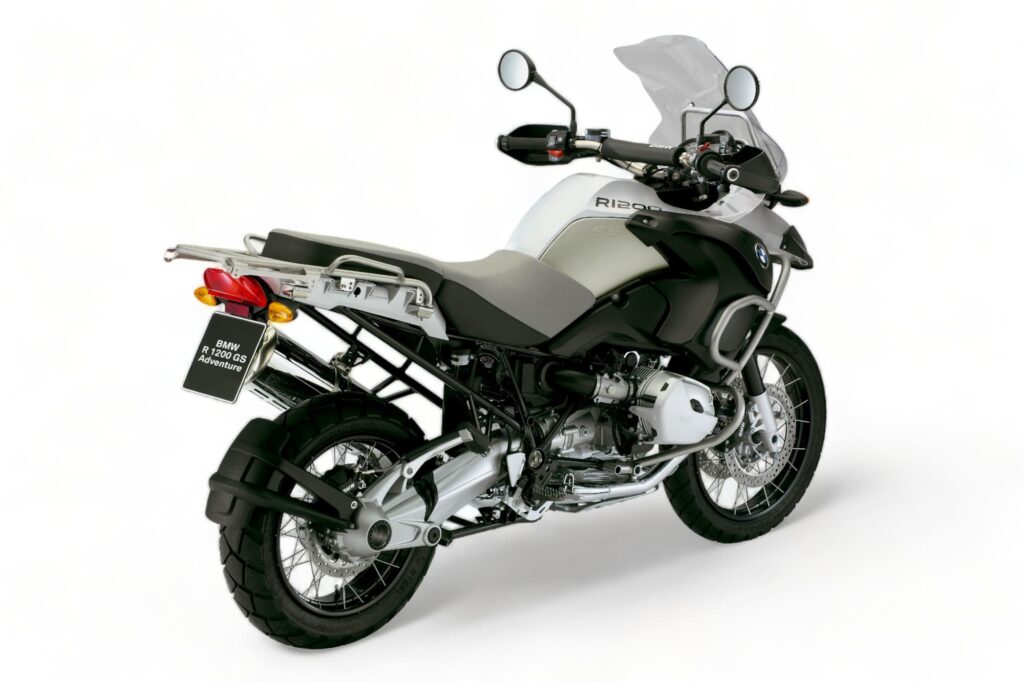
BMW brought the same tech to the BMW K 1200 S, which introduced a transverse inline-four (no longer longitudinal).
Since then, BMW has kept the same fundamental design in the rear suspension, aside from swapping it to the other side of the wheel. But BMW has modified the suspension in other ways, introducing ESA and Dynamic ESA, for example.
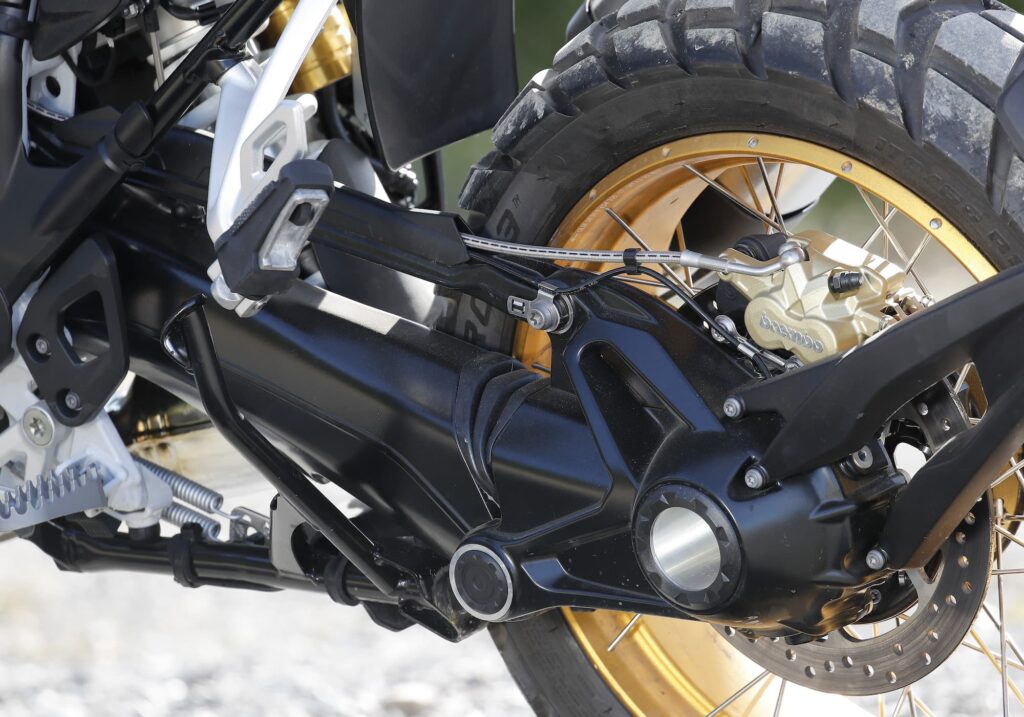
Other Similar Technologies
Moto Guzzi has also used a similar parallel strut suspension system to BMW Paralever. They first introduced an anti-jacking system in 1993, and kept iterating on that design in their sport bikes and then generally their bigger road bikes.
Moto Guzzi has a patented system they call the Compact Reactive Drive Shaft, also sometimes written as CARC (for Cardano Reattivo Compatto, Italian for the same thing, but using the word “Cardan” as BMW does).
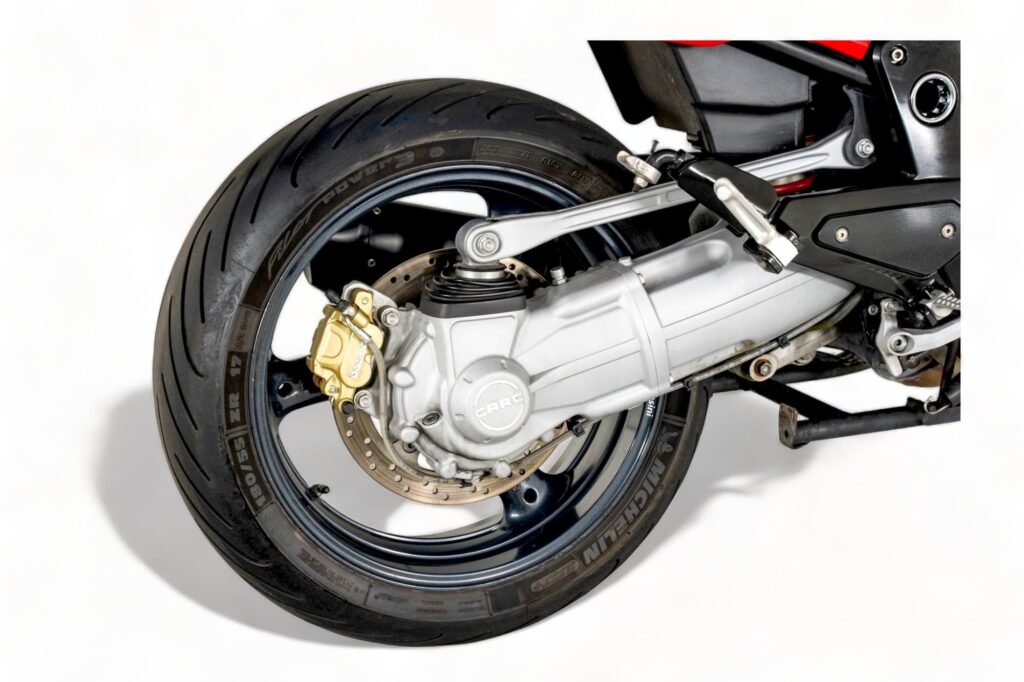
It works with much the same principle — there’s a double universal joint in the shaft with torsional dampeners, and a second arm running parallel to the axle.
Moto Guzzi used the CARC system in the Breva, the Norge, the Stelvio, the Griso, and Sport models with 1100 and 1200 motors. Maybe a few others ones too. However, the 750 models do not have a CARC system.
Guzzi fans (/fanatics) refer to the generation of bikes with a CARC final drive as “CARC bikes” generally. I suppose writing that prominently on the machine had its effects.
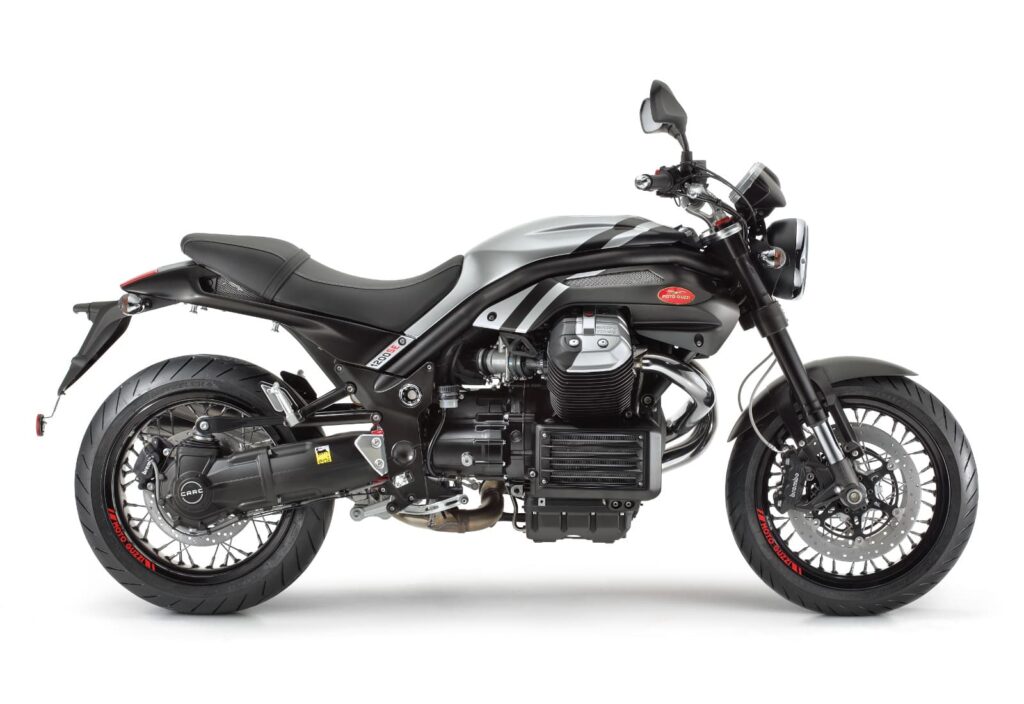
Finally, Kawasaki uses a similar system on their 2008+ Concours 14, also known as the 1400GTR. Kawasaki calls it “Tetra-Lever”, presumably after the tetrahedron shape.
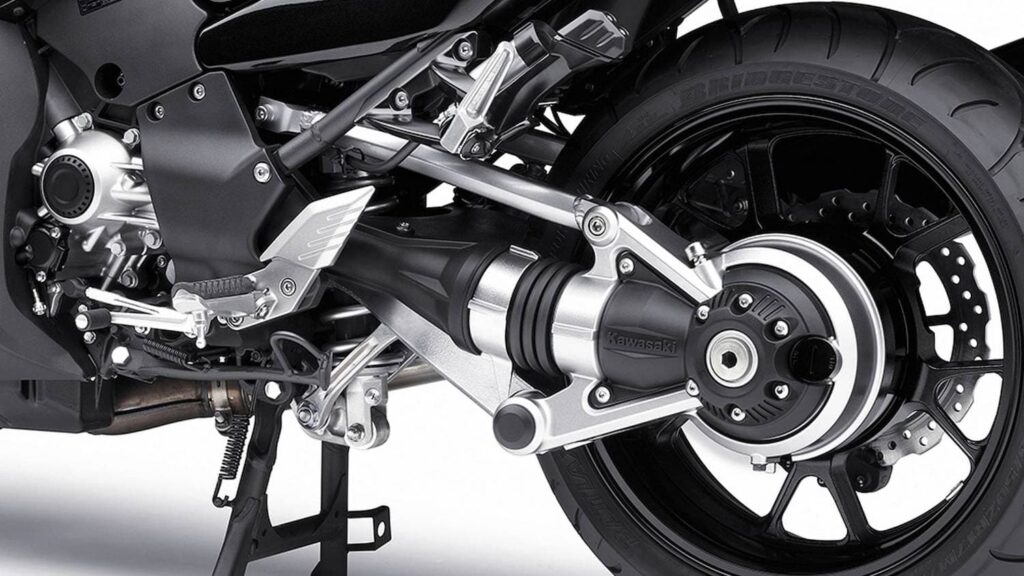
Kawasaki made similar claims about their “Tetra-Lever” system, that it’s designed to offset the lifting and squatting tendencies of shaft drives when you open or close the throttle, and to give as smooth a response as a chain. Owners of the Concours 14 / 1400GTR do say that it has a very smooth ride with no jacking effect, so it seems it works!
Wrap up
What is almost as interesting as the Paralever / CARC / Tetra-Lever system is how many motorcycles don’t have it as standard.
BMW uses Paralever in its big-bore boxers. It even does in the relatively stripped-back BMW R nineT (see here for the buyer’s guide). But the BMW R 18, a newer bike, does not have it. I suppose it makes up for it by having a long swing arm.
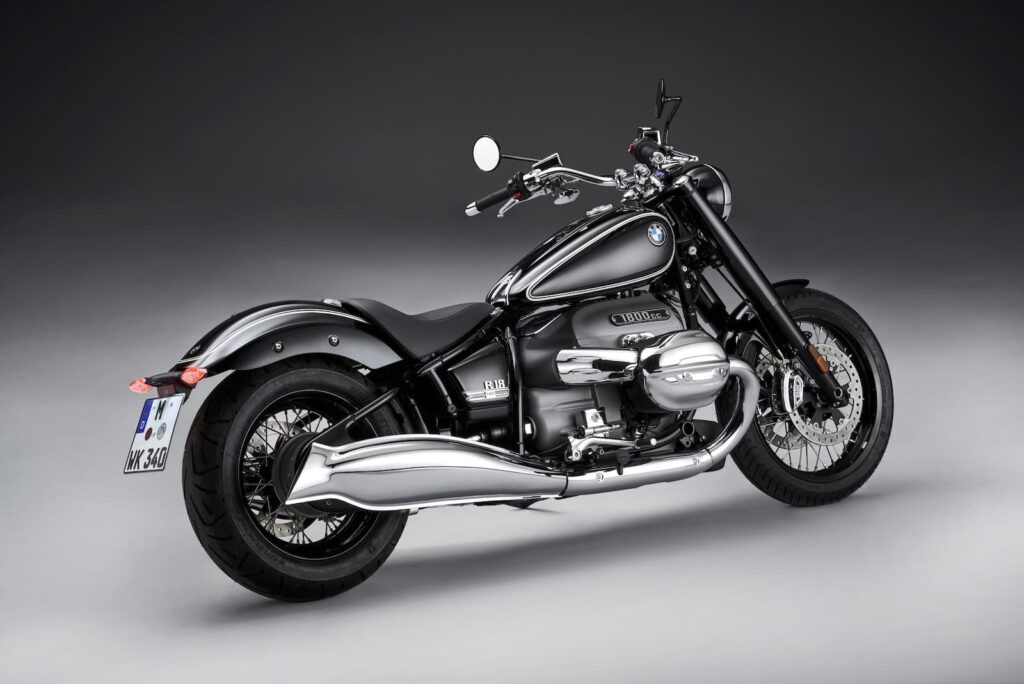
Over on the Moto Guzzi side, none of the modern line-up — the V7, V9, V85 TT, nor the high-end V100 Mandello — have a CARC system. Owners don’t seem to be complaining about shaft jacking.
The Moto Guzzi V100 Mandello, which makes much more power and torque than most old GS bikes, allegedly has a compact enough engine that Moto Guzzi can use a long drive shaft / swing arm, which mitigates the effect. I don’t see owners complaining. (See Andy Greaser’s review, though many others say the same thing.)
And Kawasaki’s Concours 14 / 1400GTR has been discontinued.
For now, it seems like Paralever (along with Telelever) are core parts of most big BMWs, though, so understanding their value is worth your time.
As a final point, the era of electric motorcycles will probably see shaft final drives in electric bikes. Given the torque monsters that electric motors can be, it’s likely we’ll see Paralever and similar final drives for a while to come.

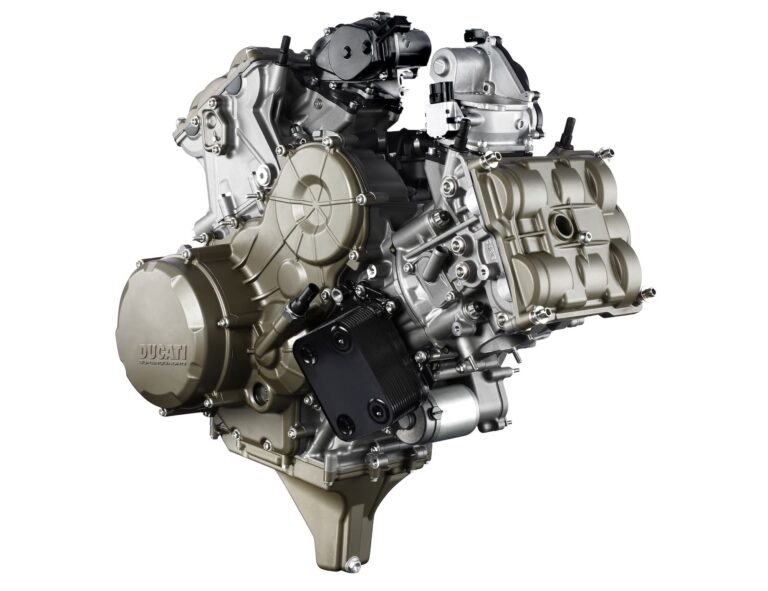
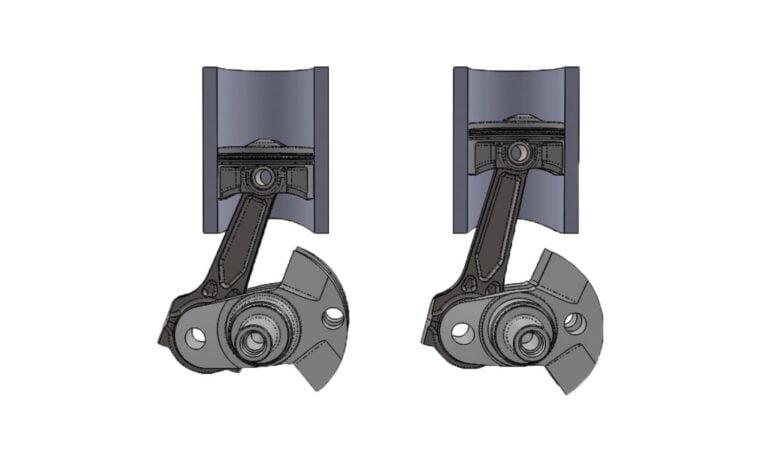
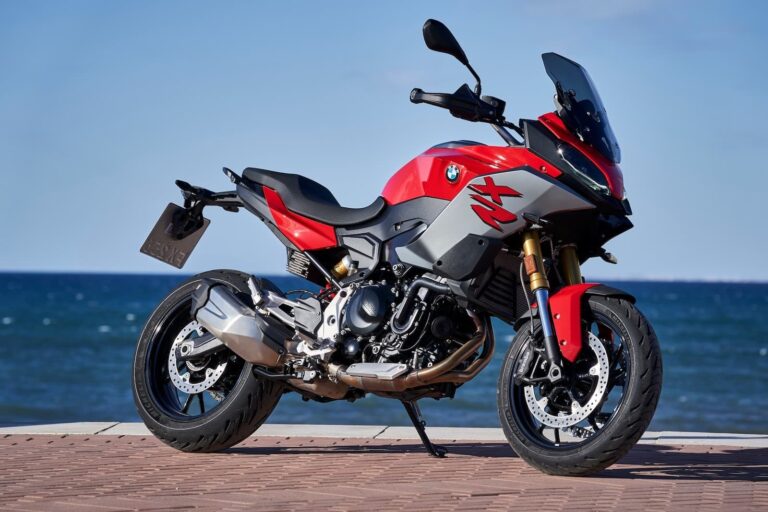
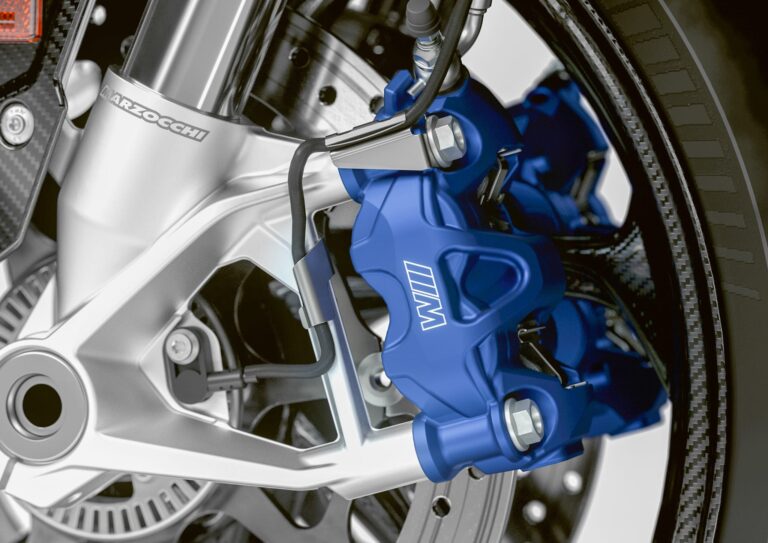
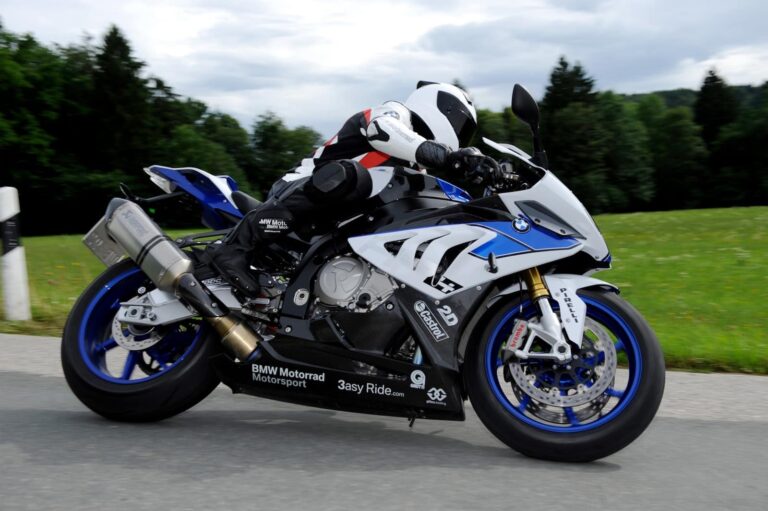
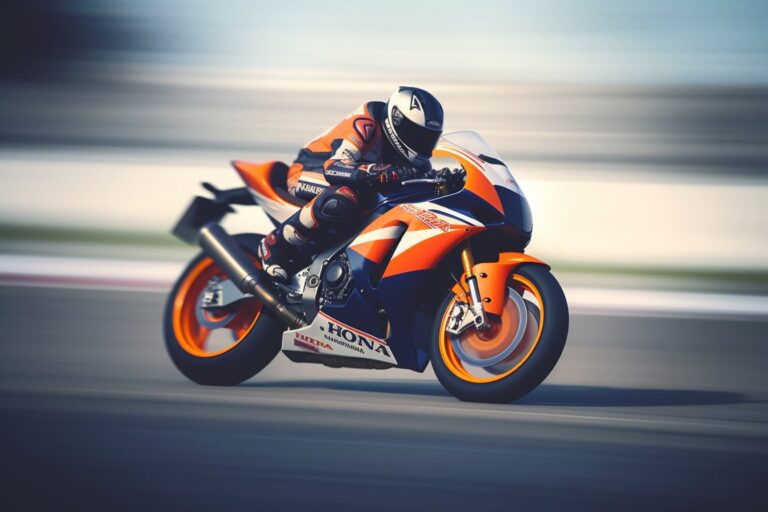
Why bother? A belt is so much better.
I’ve had many BMWs. No more. Always uncomfortable. And silly.
Hi Dana,
I stumbled upon your article about BMW’s paralever while researching the assembly of their final drive. Specifically, I’m curious if it’s possible to alter the gear ratio, like changing a GS’s 2.91 ratio to an RT’s 2.75, by just swapping the pinion, crown wheel, and a few shims, or if a complete new final drive is necessary.
I recently acquired a 2007 R1200ST, which I adore for its ESA suspension and tall 2.62 final drive ratio, akin to that era’s RT. It’s compact, lighter, and has a 21-litre tank, minus the servo brakes of later models. Despite its great features, like comfortable suspension, ample fuel capacity, and good wind protection, it was surprisingly short-lived, only produced for three years.
However, I encountered ABS faults due to the sticking brushes in the ABS pump motor, a common issue with these models. I resolved it by replacing the motor with one from an LW Ford Focus. This fix has held up well so far.
My interest now lies in creating a similar setup with a current R1250RS or GS, particularly in changing the final drive ratio. I wonder if BMW would accommodate a special order for a different gear set, say a 33/12, especially if it’s a condition of purchase.
A letdown with the newer models is their reduced tank size, just 18 litres. Considering people often use these bikes for touring, a larger tank would be more practical. I’m exploring the possibility of adding a 5-litre auxiliary tank with an electric pump for refueling.
Maintenance-wise, I recently lubed the shaft splines and changed the final drive oil on my ST, a routine neglected by BMW until recently. The post-2004 Paralever design seems less efficient compared to its predecessor, and in comparison, my chain-driven Speed Triple appears lower maintenance.
Your article mentioned BMW maintaining the fundamental rear suspension design, with minor changes like switching sides. I also learned about improvements in the 2010 camhead models, like integrating the pinion support bearing into the FD oil system.
The wethead engine layout since 2013 has a wet clutch at the front, resulting in a compact design and reduced torque transmission. The right cylinder camshaft drive differs from the left, turning in opposite directions. I believe the shift of the swingarm to the left in these models compensates for the additional drive direction reversal in the clutch mechanism.
The upcoming R1300GS’s engine layout, with the gearbox below the crankshaft, is intriguing. I’m curious about the rationale behind this design.
Apologies for the long message, and I hope you find these insights interesting.
Cheers,
IanB
Great read on the BMW suspension and drive ‘chain’ <~ see what I did there hahaha!
Just wondering if you have done a write up of the DSA of the new BMW R1300GS yet??
Regards.
Not yet. They’re only just becoming available in places near me!
Thank you for the insight. To summarize my understanding: The combination of the paralever system, the additional torque control arm, and the use of universal joints on both ends of the drive shaft allows for a fixed-length drive shaft. This shaft features splined, non-moving connections to both the gearbox and the pinion.
With this setup, does the Cardan shaft, equipped with universal joints at both ends, prevent any changes in the length of the drive shaft in the BMW 1200’s final drive configuration?
It sounds like you’re concerned that the drive shaft length would change. I’m curious why. But at any rate, yes, the drive shaft length must stay the same. It’s a fixed item — it can’t change in length. At least, if it can I can’t see how…